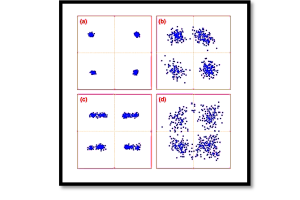
Phase Modulation (PM): Understanding the Process, Comparison, and Applications
Phase Modulation (PM) is one of the foundational techniques in communication systems, playing a critical role in transmitting information efficiently across various mediums. By altering the phase of a carrier wave in accordance with the amplitude of the modulating signal, PM provides a robust and noise-resistant method for signal transmission. In this detailed exploration, we will uncover the principles, mathematical underpinnings, and real-world applications of PM.

This formula highlights the essence of PM: the phase term Kpm(t) introduces a variable phase shift proportional to the modulating signal m(t), while the amplitude and frequency of the carrier wave remain constant.

Characteristics of PM Signals
- Phase Shift: The carrier signal’s phase deviation is directly proportional to the amplitude of the modulating signal. If the modulating signal increases, the phase of the carrier shifts accordingly.
- Constant Frequency and Amplitude: PM maintains a constant carrier frequency and amplitude, ensuring high resistance to amplitude-based noise.
- Bandwidth Efficiency: While PM generally requires more bandwidth than AM, it is more bandwidth-efficient than FM in certain scenarios.
For example, consider a sinusoidal modulating signal m(t)=Am sin (ωmt)). The corresponding PM signal can be expressed as:

This modulation results in a complex wave where the phase continuously shifts according to the sine wave of m(t).
Comparison of PM and FM
Phase Modulation is often compared to Frequency Modulation because they both fall under the umbrella of angle modulation. The primary distinction lies in how the modulating signal influences the carrier signal. In PM, the phase of the carrier is proportional to the instantaneous amplitude of the modulating signal, while in FM, the frequency deviation is proportional to the modulating signal’s amplitude. The mathematical relationship for FM is:

Key Differences:
- In FM, the instantaneous frequency is determined by the integral of the message signal. In PM, the instantaneous phase is directly proportional to the message signal.
- PM signals can be generated by differentiating the FM waveform or using a Voltage-Controlled Oscillator (VCO).

Applications of Phase Modulation
PM finds utility in various fields, particularly in digital communication systems. Some common applications include:
- Wireless Communication: PM is used in digital modulation techniques like Phase Shift Keying (PSK), which encodes data as discrete phase shifts in the carrier wave.
- Audio Transmission: PM helps encode stereo and auxiliary signals in FM broadcasting.
- Satellite Communication: PM is used in telemetry systems for sending and receiving data over long distances with minimal interference.
- Navigation Systems: Many Global Navigation Satellite Systems (GNSS), including GPS, use PM to encode navigation data.
Advantages:
- PM signals are less affected by noise compared to AM.
- It supports efficient data transmission in digital formats.
Disadvantages:
- Receivers for PM are complex and costlier than AM receivers.
- PM generally requires a slightly wider bandwidth compared to AM.
Take our entry level course (Below) for free using coupon code RAHRF101BLOG
RF Fundamentals, Basic Concepts and Components – RAHRF101
For limited time take an additional 10% off of all our courses using coupon code RFCERT10
Rahsoft RF Certificate and courses
Conclusion
Phase Modulation is a versatile and efficient modulation technique, particularly valuable in scenarios requiring robustness against amplitude noise. As communication systems continue to evolve, PM remains a cornerstone of modulation technologies, contributing to the development of reliable and high-speed communication networks.

Learn more about this topic by taking the complete course ‘Introduction to Modulation in Communication Systems Online Course – RAHRF152’. Watch the course videos for more detailed understanding. Also checkout other courses on RF system and IC design on https://rahsoft.com/courses/. Rahsoft also provides a certificate on Radio Frequency. All the courses offer step by step approach.
Tag:Modulation, Phase Modulation, PM



